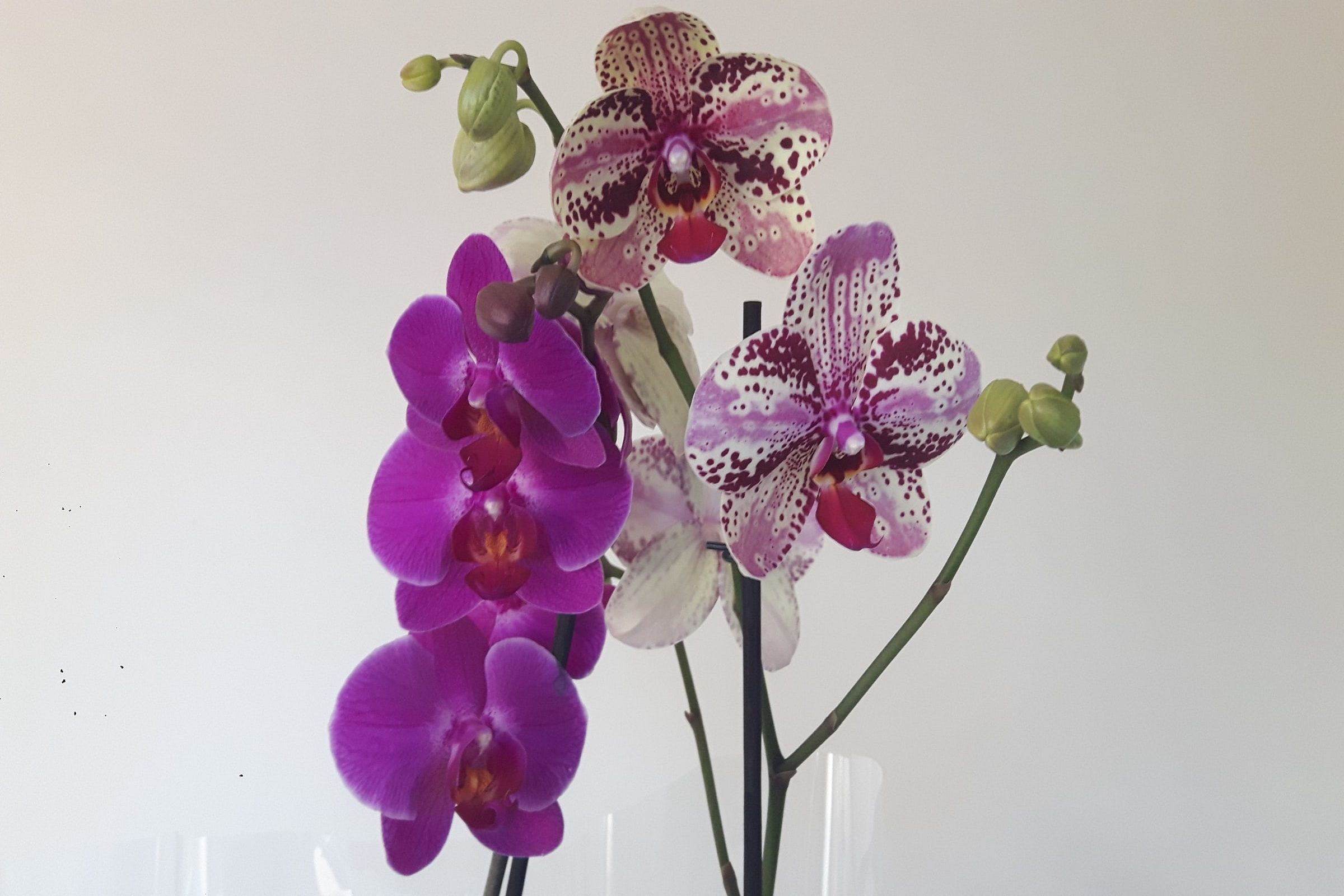Yes! You, too, can get in on the action with a plant species that belongs to one of the greatest in the plant kingdom! If you didn’t know, there are around 25 to 30 thousand species of orchids, but only some of them are suited for hydroponic gardening.
Many orchids are difficult to grow because they need the correct humidity and temperature to flourish. They can be divided into “hardy orchids” and “half-hardy orchids,” with the latter growing well in the United States’ Department of Agriculture’s (USDA) hardiness zone 11. Hardy orchids do OK in zones six through nine.
If you live in a frosty climate, you’ll find that as long as you keep your house warm and cozy, you can grow orchids inside as either hydroponic or potted plants.
Which orchids grow well hydroponically?
As noted above, only some orchids are well-suited to a hydroponic orchid garden. The best hydroponic orchids are terrestrial orchids. They grow naturally in loose, moist soil and these plants need a steady, constant supply of moisture and food to do well. Hydroponic gardens are ideal for supplying those nutrients.
On the other hand, epiphytic orchids grow and hold onto tree branches in sub-tropical jungles. They drink rainwater and take their nutrients from decaying plant matter. These are not orchids that do well in a hydroponic garden.
Growing hydroponic orchids at home
First thing’s first. Recall that unlike ferns, philodendrons, or palms, orchids grow on trees and rocks. They don’t grow in the ground. They’re not your typical, potted house pet. (Plant! We meant plant!) The truth is, you’d kill it if you planted an orchid in potting soil the way you usually do with other houseplants.
Instead, hydroponic orchids are grown using water with added nutrients. Growing orchids in water is a method that consists of using inert materials like clay pebbles, gravel, perlite, charcoal, or rockwool as a growing medium.
Water is brought to the orchid’s roots by a capillary system in this type of hydroponics. Room temperature water is used for flushing the substrate when the solution reservoir is low. You can plant hydroponic orchids in any container that’s not made of glass as long as you ensure that there are three to four drainage holes in the side. Additionally, you need to make sure there’s a reservoir of nutrient-rich water at the bottom.
With all that said, keep in mind the following three things when deciding to grow orchids in water.
Your orchid isn’t dying just because it doesn’t have flowers
If you’re growing orchids in water and notice that their flowers are fading, please don’t panic. Your orchids aren’t dying. These plants have a growing and blooming season, which are not the same. Orchids don’t bloom constantly. Like many other plants, orchids have an internal clock that tells them precisely when to grow and bloom.
With that said, not all orchids have the same internal clock. Some bloom for three or more months while others put out flowers only for a week or so. Many orchids bloom only once a year while others do so bi-annually. If you don’t see flowers on your orchid for some time, have patience. If your plant is healthy, it will eventually bloom during its life cycle.
Orchids need a lot of light
More than regular houseplants, hydroponic orchids need sunlight. Of course, every plant needs sunlight to survive. Remember, though, that orchids usually grow on trees where they are exposed to a great deal more sunlight than plants, which live on the forest floor.
A great place to arrange orchids is the windowsill, provided it’s on the side of the house that gets tons of sun. Just how much sunlight your orchid needs depends upon what kind you have, but exercise some forethought and provide it with plenty!
Orchids need room temperatures
Now, orchids in the wild experience a fluctuation in temperatures. It’s hotter in the day, and at night the temperature drops. You’ll want to mimic this at home, although you won’t have to do anything extreme. Hydroponic orchids are OK with average temperatures found in your home.
Still, you’ll want to ensure that you set your orchids near a window or on a windowsill (just as you would for the sunlight). Your orchids will appreciate the fact that there might be a variance of up to 30 degrees near a window, which copies an orchid’s natural environment nicely.
Finally, be sure to keep the humidity levels in your house around 50 to 70 percent. You can check humidity levels by purchasing an indoor humidity monitor . To make sure you’ve got the right level of moisture in the air, you’ll want to turn down the thermostat in cold winter months and keep the air conditioner turned off as much as possible in the summer.
Remember that when you grow orchids in water in a hydroponic garden, you can grow them in any climate, anywhere in the world. By growing orchids in water, you also substantially reduce or eliminate threats to your orchids such as bacteria, fungus, and pests like snails, slugs, thrips, and aphids!




